Today’s Current Affairs: 26th July 2024 for UPSC IAS exams, State PSC exams, SSC CGL, State SSC, RRB, Railways, Banking Exam & IBPS, etc
Table of Contents
Lokmanya Tilak Birth Anniversary:
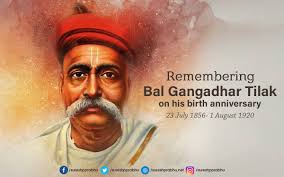
The Prime Minister recently paid tributes to Lokmanya Tilak on his birth anniversary.
- Bal Gangadhar Tilak, commonly known as Lokmanya Tilak, was a prominent Indian nationalist, freedom fighter, social reformer, and political leader during the Indian independence movement.
- He was one of the prime architects of modern India and probably the strongest advocate of Swaraj, or Self Rule for India.
- He is known for his slogan, “Swaraj is my birthright, and I shall have it.”
- He was born as Keshav Gangadhar Tilak,and his followers bequeathed upon him the title of ‘Lokmanya’, meaning he who is revered by the people.
- Extremist: He was considered aradical Nationalist.
- The British Government termed him the “Father of Indian Unrest”.
- He joined the Indian National Congress Party in 1890.
- He also helped found the All India Home Rule Leaguein 1916–18 with G. S. Khaparde and Annie Besant.
- Tilak started his Home Rule League in Maharashtra, Central Provinces, and Karnataka and Berar region.
- Besant’s League was active in the rest of India.
- It aimed to advocate for self-rule and raise public awareness about India’s right to govern itself.
- Tilak was a prolific writer and journalist.
- He used his newspaper, “Kesari” (meaning Lion) in Marathi and later “Maratha” in English, to disseminate nationalist ideas.
- Some of his notable literary works include “The Arctic Home in the Vedas,” where he presented his theory that the Vedas originated in the Arctic region, and “Shrimad Bhagavad Gita Rahasya,” an interpretation of the Bhagavad Gita from a nationalist perspective.
- Tilak believed in the power of education and established the Deccan Education Society in Pune in 1884.
- The society founded Fergusson Collegeand the New English School, which played crucial roles in promoting modern education in Maharashtra.
Magnetotactic Bacteria:
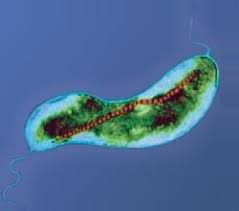
Researchers have uncovered fossil remains of magnetic particles, known as magnetofossils produced by magnetotactic bacteria, in rock varnish layers in Ladakh, India.
- Magnetotactic bacteria are mostly prokaryotic organisms that arrange themselves along the earth’s magnetic field.
- These are present in freshwater and marine habitats.
- These organisms were believed to follow the magnetic field to reach places that had optimal oxygen concentration.
- These bacteria contained “novel structured particles, rich in iron” in small sacs that essentially worked as a compass.
- These magnetotactic bacteria create tiny crystals made of the iron-rich minerals magnetite or greigite. The crystals help them navigate the changing oxygen levels in the water body they reside in.
- It is believed that these microbes may represent some of Earth’s earliest inhabitants.
Highlights of the research:
- Researchers are inspired by the similarities between the rock varnish in Ladakh and those observed on Mars by the Perseverance rover.
- They identified elevated concentrations of oxidized manganese (Mn4+) and carboxylic acid functionalities on the varnish surface, suggesting the presence of organic signatures.
- These findings indicate that the magnetic minerals in the rock varnish are likely biotic in origin.
- By detecting biotic signatures in rock varnish, scientists can better focus on identifying biosignatures on Mars and other celestial bodies.
- This information is crucial for future space missions, including those planned by ISRO and other space agencies, aiming to explore Mars and assess its habitability
Tinzaparin:

Researchers found tinzaparin significantly reduced damage to human cells due to spitting cobra venom.
- Tinzaparin is a drug used to treat serious blood clots, can reduced damage to cells due to spitting cobra venom.
- It is a low-molecular-weight heparin (LMWH) with antithrombotic properties.
- It is used for the treatment of deep venous thrombosis, a condition in which harmful blood clots form in the blood vessels of the legs.
Highlights of the research
- Tanzaparin worked by blocking the interaction between the venom and its receptor in the cell by binding to venom molecules.
- Snake Venom’s toxicity depended on the biological pathway that synthesised heparan sulphate, artificially stopping this pathway could ameliorate the venom’s toxic effects.
- One way of doing so is to introduce molecules that closely resemble heparan sulphate.
- As the body senses an excess of these molecules, it shuts down the pathways responsible for heparan sulphate synthesis. One such molecule is tinzaparin.
- When the team introduced tinzaparin immediately after subjecting cells to the snake venom, the cells survived.
Olympic Order:
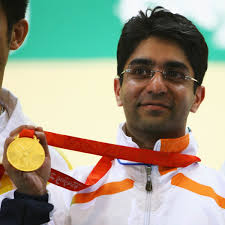
Abhinav Bindra was bestowed with the Olympic Award by the International Olympic Committee.
- Olympic Order is the highest award bestowed by the International Olympic Committee (IOC) for outstanding contributions to the Olympic Movement.
- It was established in 1975, it replaced the Olympic Diploma of Merit and is awarded to individuals who have demonstrated exceptional merit in the cause of sport or rendered significant services to the Olympic Movement.
- The Olympic Order has three grades: gold, silver, and bronze.
- The gold order is reserved for heads of state and exceptional circumstances.
- The insignia of the Olympic Order features a collar or chain with the five Olympic rings and the kotinos emblem, an olive wreath.
- Recipients also receive a lapel badge in the corresponding grade.
- The Olympic Order is a symbol of recognition for those who have made significant contributions to the Olympic Movement, promoting the ideals of unity, friendship, and fair play that the Olympics embody.
- It is a testament to the IOC’s commitment to honouring those who have advanced the cause of sport and the Olympic Movement globally.
Llama 3.1:
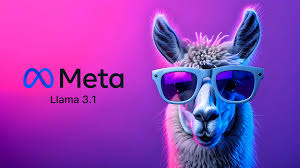
Meta has unveiled its new open source AI model Llama 3.1
- Llama 3.1 is Meta’s largest ever open source AI model, and it has outperformed the likes of OpenAI’s GPT-4o and Anthropic’s Claude 3.5 Sonnet on numerous benchmarks.
- The new Llama 3.1 models are reportedly far more complex compared to Llama 3 models.
- It can converse in eight languages, write higher-quality computer code and solve more complex math problems than previous versions.
- It comes with 405 billion parameters, or variables that the algorithm takes into account to generate responses to user queries.
- The running inference (a process to train machine learning models) on Llama 3.1 405B is cost-effective as it is around 50 per cent cheaper than closed models like OpenAI’s GPT-4o.
- Llama comes with systems like Llama Guard that can be secure against unintentional harms such as bad health advice or unintended self-replication, which he noted as major concerns.
Open source AI model:
- It is an artificial intelligence technology that is publicly available for both commercial and non-commercial use under several open source licenses.
Sangameswara Temple:
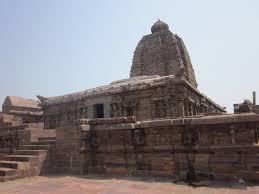
The Sangameswara temple submerged in the backwaters of the Srisailam project in Nandyal district recently following copious inflow from the Krishna River.
- Sangameswara Temple is a Hindu Temple dedicated to Lord Shiva located in Nandyal district in Andhra Pradesh.
- It is located on the Krishna River bank.
- It was built in 740 AD by Chalukya ruler Pulakesin II.
- The temple was originally located at the point where Tungabhadra and Krishna Rivers were merged, 10 km away from the current site.
- The temple was dismantled and built exactly rock-to-rock in the current site in 1979, as the original site was getting submerged due to the construction of Srisailam Dam.
- Built in Nagara style, the temple is built on an elevated platform with a fortified wall around the temple.
- The temple has a large hall with 12 pillars, followed by the sanctum.
INS Triput:

Goa Shipyard Limited (GSL) recently launched the first indigenously-built Talwar class frigate, ‘Triput’.
- INS Triput is the first indigenously built Talwar-class frigate.
- In October 2016, India and Russia signed a deal to buy four stealth frigates of the Admiral Grigorovich class.
- Two of these frigates, ‘Tushil’ and ‘Tamal’, will be directly imported, and the remaining two frigates will be built in India by GSL through a transfer of technology (ToT).
- Triput is the first ship built by GSL under this.
- The second frigate, ‘Tamal’, will be delivered by February 2025.
- The Indian Navy already operates six ships of this class: INS Talwar, INS Trishul, INS Tabar, INS Teg, INS Tarkash, and INS Trikand.
Features of INS Triput:
- The 124-m-long and 15.5-m-wide ship is propelled by four gas turbines which are designed to achieve a maximum speed of 28 Knots at a displacement of approx. 3200 tons.
- It features a hull design that reduces radar cross-section, contributing to their stealth capabilities.
Greenium:
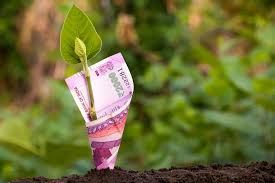
The Chief Economic Advisor recently said that private investors need to “walk the talk” on prioritising sustainable investments, citing the low “greenium” from them on India’s sovereign green bond offerings.
- Greenium refers to the savings an issuer of a green bond realises on the associated coupon payment because the bond is green.
- It is the amount by which the yield on the green bond is lower, compared with the conventional bond.
- Green bonds are debt instruments that fund specific projects/activities categorised as ‘green’ under national or international green taxonomies.
- Such activities may include renewable energy projects, electric buses, and energy efficiency initiatives.
- Each bond has an issuer, i.e., those who want to raise money with a promise of a regular fixed payment and investors, i.e. those who provide that money with a promise of a regular fixed income.
- The logic behind a greenium is that because of the appeal of sustainability, green bonds attract investors who are ready to forgo some of their returns and accept lower payments (called a lower yield).
- Further, long-term green projects are associated with a reduction in both physical and financial risk.
- Thus, investors settle for lower returns, making green projects financially attractive for the issuers of these debt instruments.
GM Mustard Approval:

Highlights of SC Verdict on GM Mustard:
- Justice Nagarathna criticised the GEAC for clearing the project without relying on any indigenous studies on the crop’s effect in India and its possible environmental ramifications and only foreign research studies were considered while making the recommendation.
- In contrast, Justice Karol upheld the GEAC’s clearance for GM mustard’s commercial release
- However, both judges concurred on certain points raised during the arguments.
- They acknowledged that judicial review of decisions made by the GEAC was permissible and emphasised the need for the Centre to consider implementing a national policy.
- The judges asked the Union Ministry of Environment and Forest to formulate such a policy, along with rules, within four months.
- This policy should cover research, cultivation, trade, and commerce, and be developed in consultation with stakeholders including agriculture experts, biotechnologists, state governments, and farmer representatives.
- The Genetic Engineering Appraisal Committee (GEAC) approved the environmental release of the transgenic mustard hybrid Dhara Mustard Hybrid-11 (DMH-11) in October 2022.
Global Trade Research Initiative:

India’s garment export industry, a significant contributor to employment, has been facing a persistent decline.
- A recent report by the Global Trade Research Initiative (GTRI) , a research Group focused on Climate Change, technology and trade, sheds light on the reasons behind this downturn, pointing to self-inflicted barriers rather than external competition.
Key Highlights of the GTRI Report:
- India’s garment exports in 2023-24 were USD 14.5 billion, compared to USD 15 billion in 2013-14.
- Vietnam and Bangladesh’s garment exports grew significantly during the same period, reaching USD 33.4 billion and USD 43.8 billion, respectively.
- Despite a decline, China still exported about USD 114 billion in garments.
- Globalisation has increased competition and shifted production to lower-cost labour countries, affecting India’s market share.
- The sector faces substantial duties on importing essential raw materials, making production more expensive.
- Archaic customs and trade procedures add to the challenges, consuming time and resources that could be better utilised.
- The dominance of local suppliers for raw materials like Polyester Staple Fibre and Viscose Staple Fibre forces exporters to rely on more expensive domestic options.
- Recent Quality Control Orders (QCOs) for fabric imports have complicated the import process, pushing up costs for exporters.
- Exporters are forced to use pricier domestic supplies, making Indian garments less competitive globally. Exporters must meticulously account for every imported component, adding to the complexity and cost.
- The PLI scheme launched in 2021 has not attracted sufficient investment and requires major modifications to be effective.
- India’s garment and textiles imports reached nearly USD 9.2 billion in 2023, with concerns that this could increase if export challenges remain unresolved.
- Developed countries prefer clothing made from mixed synthetics, while only less than 40% of Indian exports consist of synthetic fabrics.
- Diversifying into synthetics can enable Indian manufacturers to operate year-round, meeting demands during autumn and winter as well.
- Indian exporters need to keep up with the fast-paced demands of the Fast Fashion Industry (FFI), which includes major players like Walmart, Zara, H&M, Gap, and online retailers like Amazon.
- Simplifying customs and trade procedures can reduce the time and cost burdens on exporters.
Humayun Tomb World Heritage Site Museum:
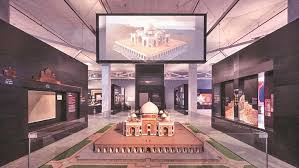
The Humayun’s Tomb World Heritage Site Museum is set to open for visitors. Nestled between Sunder Nursery and Humayun’s Tomb in Nizamuddin, Delhi, this museum promises to offer visitors a unique insight into the life and times of the second Mughal Emperor, Humayun.
Key Highlights of Humayun’s Tomb Site Museum:
- The museum is designed like a baoli (stepwell) and includes a 100-seat auditorium, temporary galleries, cafés, meeting rooms, and a library.
- Artefacts such as a pear-shaped water vessel belonging to Jauhar Aftabchi, a biographer of Humayun, and a helmet used by Humayun as a cooking vessel during his travels to Persia.
- The artefacts displayed in the museum are on loan from the National Museum for 10 years, ensuring a rich and varied display for visitors.
- Exhibits include coins from the reigns of 18 Mughal-era kings and the throne of Bahadur Shah Zafar, the last Mughal emperor.
- Coins from Akbar’s era with ‘Allah’ on one side and ‘Ram’ on the other. Expensive coins from Jahangir’s era. Rare coins minted by Bahadur Shah Zafar.
- Focuses on the architecture of Humayun’s Mausoleum and the emperor’s personality. Exhibits convey stories of Humayun’s travels, administration, interest in reading, astrology, the arts, and his patronage of architecture.
- Highlights four cultural figures associated with the Nizamuddin area from the 14th century: Sufi Saint Hazrat Nizamuddin Auliya, Poet Amir Khusrau Dehalvi, Rahim, a commander-in-chief of Akbar’s army and poet, and Dara Shukoh, known for translating the Upanishads into Persian.
- Managed by the Archaeological Survey of India (ASI), the museum is part of a larger conservation effort encompassing the 300-acre Humayun’s Tomb-Sunder Nursery-Nizamuddin Basti area.
Neutrinos:

Neutrinos play an important role in particle physics and astrophysics. It is a fundamental elementary particle, and atmospheric neutrinos can be studied when solar radiation hits the Earth’s atmosphere.
- Neutrinos are subatomic particles that have no electric charge, have a small mass, and are left-handed (the direction of its spin is opposite to the direction of its motion).
- They are the second-most abundant particles in the universe after photons and the most abundant among particles that make up matter.
- Neutrinos interact with matter very rarely, making them difficult to study.
- Neutrinos can change from one type (electron-neutrino, muon-neutrino, tau-neutrino) to another as they travel and interact with other particles, a phenomenon called neutrino oscillation.
- Neutrinos can carry information across large distances due to their low interaction rate with matter.
- They could potentially be used to transmit information, replacing electromagnetic waves in communication channels.
- Physicists have built large and sensitive detectors to study neutrinos and maximise the number of interactions between neutrinos and the detector’s matter.
- India’s Neutrino Observatory project is proposed to be set up at Pottipuram village in Theni (Tamil Nadu) in a 1,200-metre-deep cave.
PM Janjatiya Unnat Gram Abhiyaan:

Finance Minister announced the launch of the PM Janjatiya Unnat Gram Abhiyaan, aimed at providing basic facilities to five crore Scheduled Tribe families across 63,000 villages in tribal-majority and aspirational districts.
- This scheme is designed after PM-JANMAN for Particularly Vulnerable Tribal Groups.
- The 2024-25 budget allocated ₹13,000 crore for the Ministry of Tribal Affairs, with a significant portion going to Eklavya Model Residential Schools.
- Smt. Nirmala Sitharaman introduced the Pradhan Mantri Janjatiya Unnat Gram Abhiyan for improving the socio-economic conditions of tribal communities.
- This initiative aims to provide saturation coverage for tribal families in tribal-majority villages and aspirational districts, covering 63,000 villages and benefiting 5 crore tribal people.
- This initiative is a testament to the Government’s commitment to the integrated socio-economic growth, infrastructure development, and generation of economic opportunities for the upliftment of tribal communities across India




